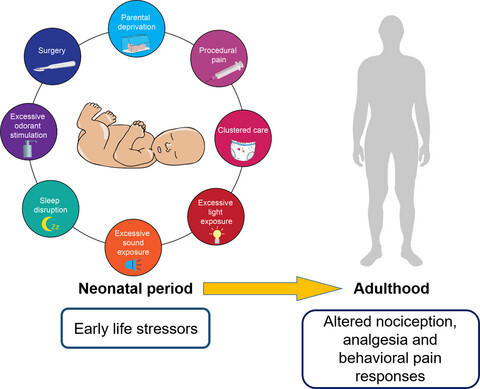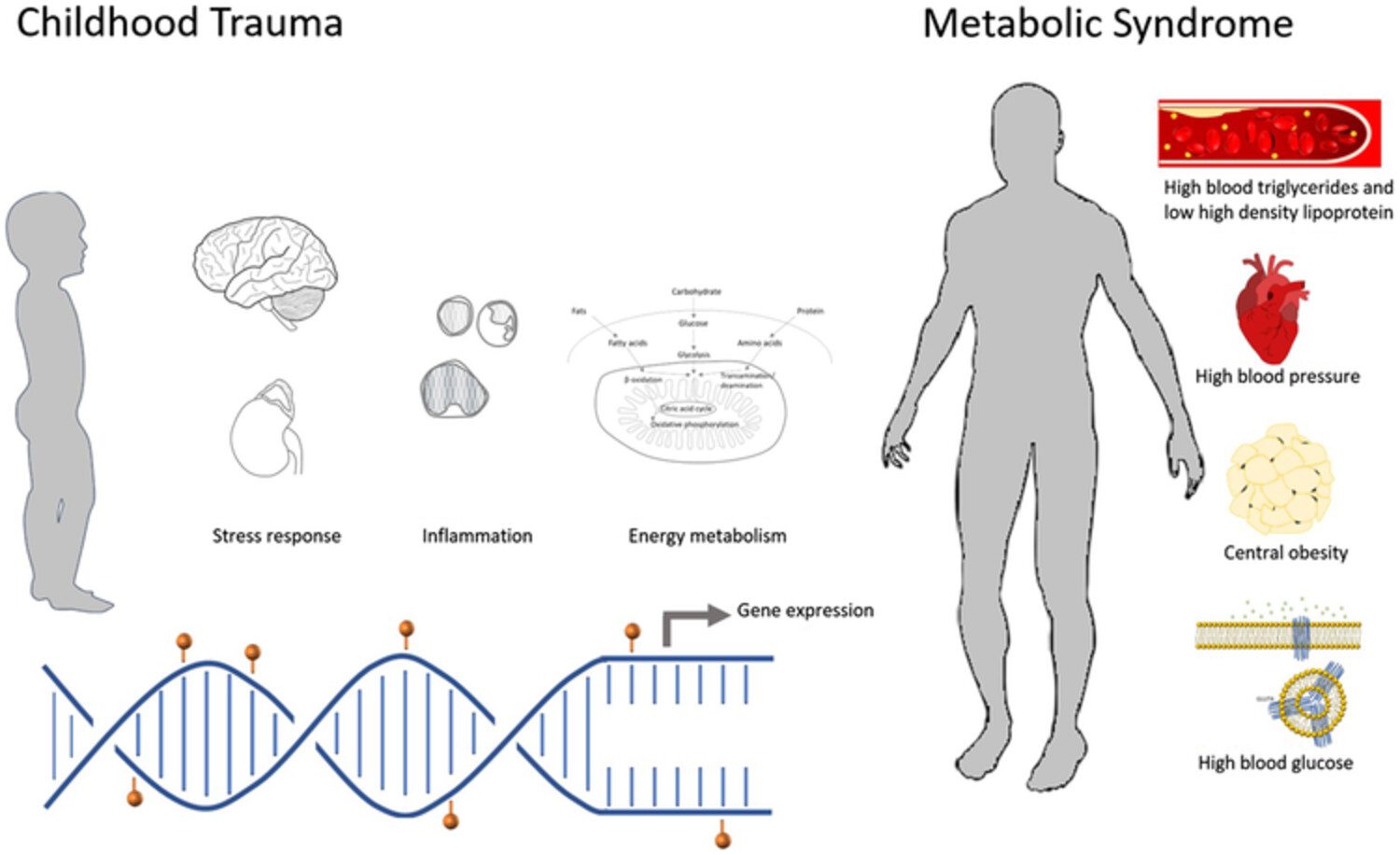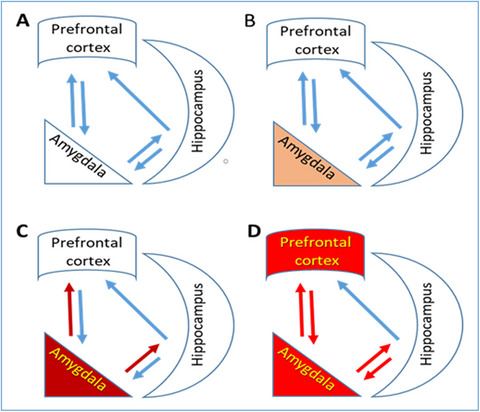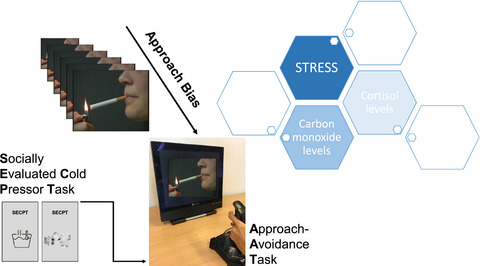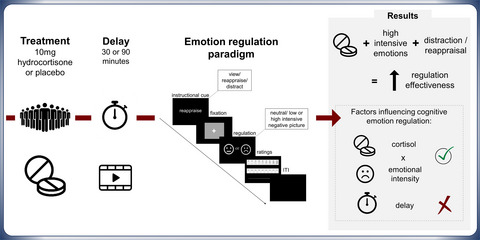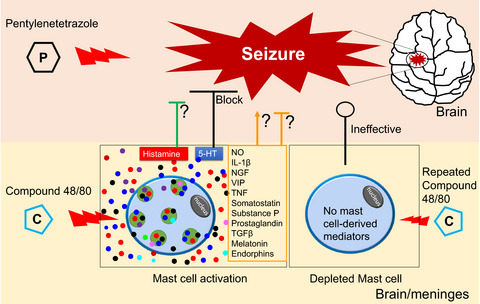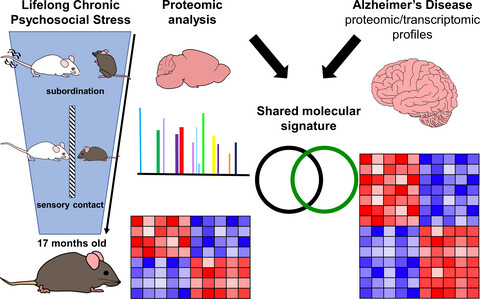Journal list menu
Export Citations
Download PDFs
ISSUE INFORMATION
SPECIAL ISSUE EDITORIAL
EJN stress, brain and behaviour special issue
- Pages: 2053-2057
- First Published: 15 May 2022
SPECIAL ISSUE REVIEWS
How early maternal deprivation changes the brain and behavior?
- Pages: 2058-2075
- First Published: 18 April 2021
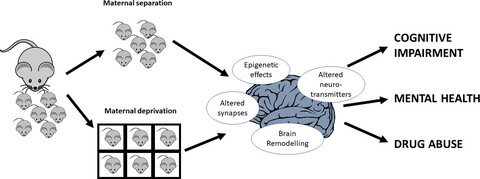
The lack of maternal care in early life represents a stressful event for the offspring. It can have lasting effects on brain development, the neuroendocrine system, and behavior. The effects of early life stress are evident also at the DNA level, making epigenetic transmission of the effects to next generations possible. Maternal separation and deprivation are used as models to study the effects of neonatal stress on the development of psychiatric pathologies, cognitive impairment, and increased risk for substance abuse.
Modeling heritability of temperamental differences, stress reactivity, and risk for anxiety and depression: Relevance to research domain criteria (RDoC)
- Pages: 2076-2107
- First Published: 24 February 2021
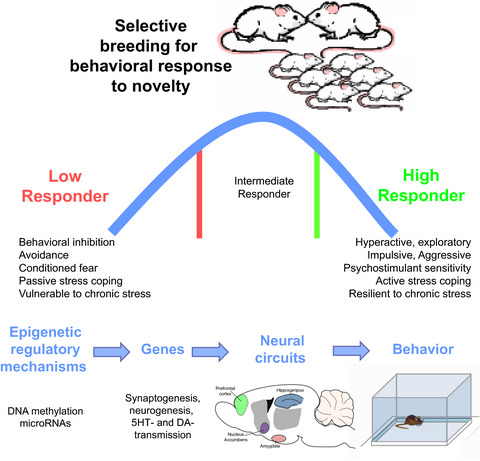
Selective breeding for low versus high locomotor response to novelty produced rat lines that differ in behavioral domains relevant to anxiety and depression. Low Novelty Responder rats show high levels of behavioral inhibition, fear, passive stress coping, and anhedonia. Molecular studies identified epigenetic and gene expression changes that contribute to these distinct behavioral phenotypes, which may aid in understanding the biological mechanisms involved in emotional disorders.
SPECIAL ISSUE ARTICLES
Early life stress induces a transient increase in hippocampal corticotropin-releasing hormone in rat neonates that precedes the effects on hypothalamic neuropeptides
- Pages: 2108-2121
- First Published: 20 March 2021
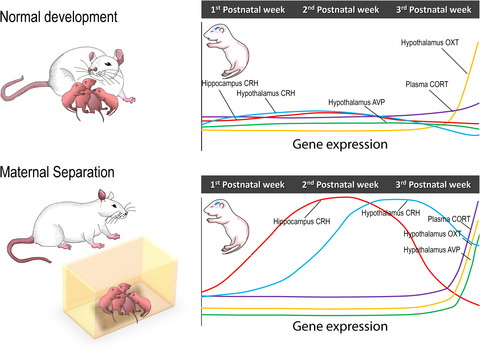
Early life stress in the form of MS180 induces a transient increase in hippocampal CRH (red line) expression in neonates that precedes the effects on hypothalamic CRH (blue line). Additionally, an increase in hypothalamic AVP (green line) and plasma CORT (purple line) was observed at weaning. The findings confirm the role of increased CRH during vulnerable time windows as a mediator of some of the detrimental effects of ELS on brain development and adult behavior.
Mild early-life stress exaggerates the impact of acute stress on corticolimbic resting-state functional connectivity
- Pages: 2122-2141
- First Published: 22 November 2021
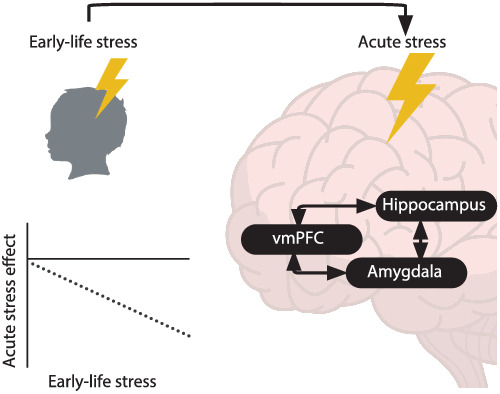
Childhood trauma has long-lasting consequences for stress coping and confers vulnerability for development of stress-related disorders. Here, we show that a history of mild early-life stress in an otherwise healthy male population exacerbates the effects of an acute laboratory stressor on functioning of neural circuits involved in emotional regulation (amygdala, hippocampus and vmPFC), thereby revealing a mechanism by which even mild early-life stress can enhance vulnerability to stressors.
Allostatic gene regulation of inhibitory synaptic factors in the rat ventral hippocampus in a juvenile/adult stress model of psychopathology
- Pages: 2142-2153
- First Published: 20 December 2020

Expression of inhibitory factors GAD65, Gabra1 and Gabra2in the ventral CA1 is differentially regulated by stress in juvenility (JS) and adulthood (AS) compared to combined stress (JS/AS). Expression of glutamatergic AMPA and NMDA receptor subunits remains unchanged after JS, AS and JS/AS in ventral and dorsal CA1. Excitation/ inhibition balance is shifted in the ventral CA1 after combined JS/AS, but not single JS or AS exposure
Enhanced psychostimulant response, but not social avoidance, depends on GluA1 AMPA receptors in VTA dopamine neurons following intermittent social defeat stress in rats
- Pages: 2154-2169
- First Published: 28 June 2020
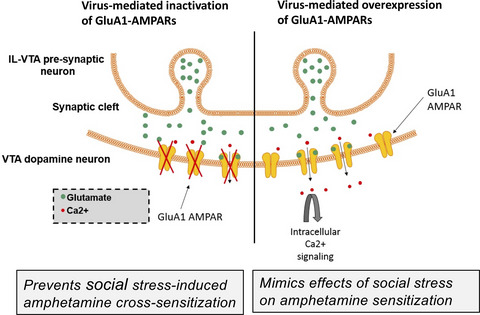
Functional inactivation of GluA1-homomeric AMPA receptors in VTA dopamine neurons of TH-Cre rats prevents social stress-induced sensitization to amphetamine, but has no effect on stress-induced social avoidance behavior. Overexpression of GluA1-homomeric AMPA receptors in VTA dopamine neurons of TH-Cre rats mimics the effects of social stress on amphetamine sensitivity, inducing augmented locomotor activity following low-dose amphetamine challenge.
SPECIAL ISSUE REVIEWS
Neurodevelopmental origins of substance use disorders: Evidence from animal models of early-life adversity and addiction
- Pages: 2170-2195
- First Published: 07 April 2021
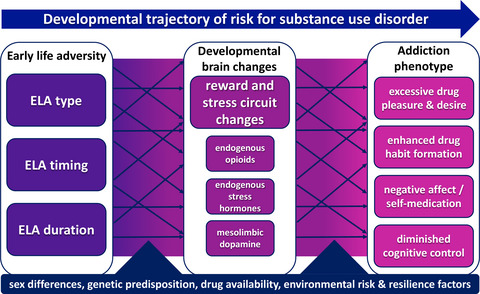
ELA perturbs multiple neurodevelopmental processes, including the development and maturation of reward and stress circuits. These alterations may lead to a variety of reward-related behaviors associated with addiction. Importantly, the developmental trajectory from ELA to substance use is mediated by a complex multitude of interacting features, ultimately manifesting as a heterogeneous constellation of neurobiological and behavioral outcomes that increase risk for substance use disorder.
The impact of adolescent stress on nicotine use and affective disorders in rodent models
- Pages: 2196-2215
- First Published: 17 August 2021
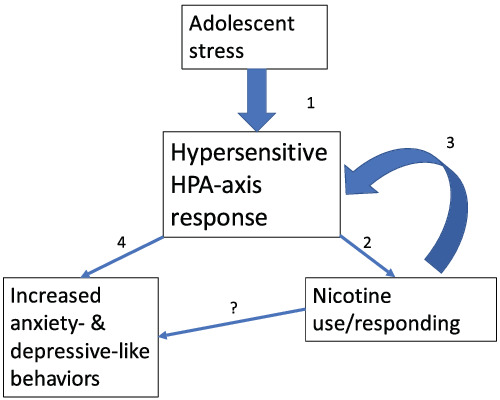
This review examines the preclinical literature on how adolescent stress influences nicotine use and affective disorders. A model is proposed where adolescent stress initiates HPA-axis activation to enhance nicotine use which in turn potentiates HPA-axis activation. This cyclical relationship ultimately leads to the development of affective disorders through heightened HPA-axis responding/sensitivity.
The burden of early life stress on the nociceptive system development and pain responses
- Pages: 2216-2241
- First Published: 22 February 2021
SPECIAL ISSUE ARTICLE
Intergenerational changes in hippocampal transcription in an animal model of maternal depression
- Pages: 2242-2252
- First Published: 09 March 2021
SPECIAL ISSUE REVIEWS
Childhood trauma, the stress response and metabolic syndrome: A focus on DNA methylation
- Pages: 2253-2296
- First Published: 24 June 2021
C-Reactive Protein: Marker of risk for post-traumatic stress disorder and its potential for a mechanistic role in trauma response and recovery
- Pages: 2297-2310
- First Published: 01 November 2020
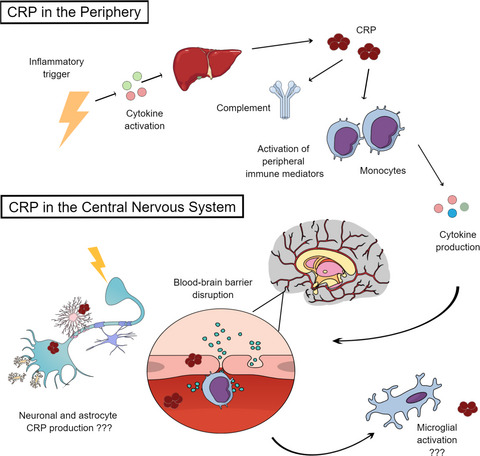
This review describes our current understanding of how C-reactive protein (CRP), potentially contributes mechanistically to PTSD pathology. We discuss the mechanisms through which CRP could modulate enduring peripheral and CNS stress responses, along with future areas of investigation probing the role of CRP and other immune signaling factors in modulating trauma responses. Overall, the evidence suggests that CRP can contribute to central inflammation, but how it does so is an area for further study.
SPECIAL ISSUE ARTICLES
Neuroendocrine and neuroimmune responses in male and female rats: evidence for functional immaturity of the neuroimmune system during early adolescence
- Pages: 2311-2325
- First Published: 18 January 2021
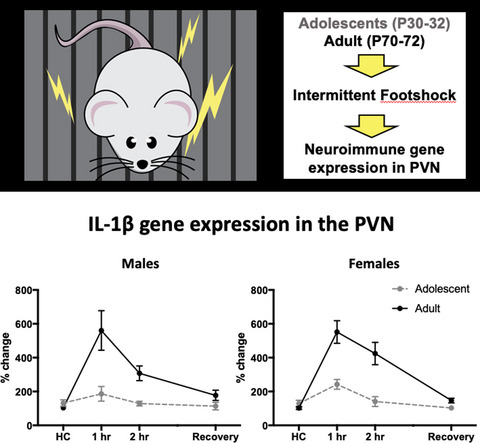
Stress challenges increase the expression of Interleukin-1β and modulate other neuroimmune signaling factors in the CNS. We evaluated neuroimmune sensitivity of adolescents and adults to stress and found that prepubertal adolescents, regardless of sex, displayed a muted induction of IL-1β and its decoy receptor, IL-1R2. These findings suggest functional immaturity of the adolescent neuroimmune system, which may contribute to long lasting effects of stress experienced during adolescence.
High-fat diet during adulthood interacts with prenatal stress, affecting both brain inflammatory and neuroendocrine markers in male rats
- Pages: 2326-2340
- First Published: 12 March 2021

Based on the “two hit model” of the developmental origin of diseases, PNS (first hit) affects foetal brain developmental trajectories; signalling pathways related to brain plasticity and function (Bdnf, Tnf-α and Il-β) are down-set potentially providing increased liability to later-life mood and metabolic disorders particularly in male offspring. A later-life challenge such as HFD feeding (second hit), experienced at adulthood, might impinge upon the same signalling pathways primed by PNS leading to enhanced responses to the metabolic challenge. The hippocampus and prefrontal cortex, being main targets of glucocorticoids, are finely modulated by PNS and readily respond to the HFD metabolic stress.
Normative range parenting and the developing brain: A scoping review and recommendations for future research
- Pages: 2341-2358
- First Published: 14 October 2020
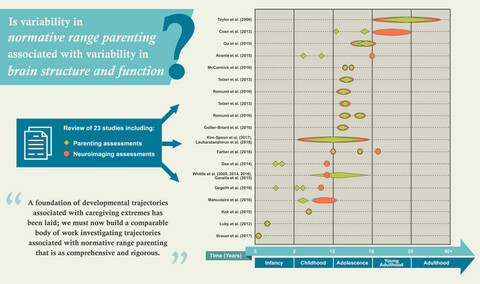
This scoping review centered on the question, “Is variability in normative range parenting associated with variability in brain structure and function?” We synthesize 23 relevant records and propose recommendations for future research on normative range parenting and brain development. In doing so, we hope to extend the literature beyond early life stress to further facilitate evidence-based research that will help inform policies and practices that yield optimal developmental trajectories.
SPECIAL ISSUE REVIEWS
The environmental enrichment model revisited: A translatable paradigm to study the stress of our modern lifestyle
- Pages: 2359-2392
- First Published: 27 February 2021
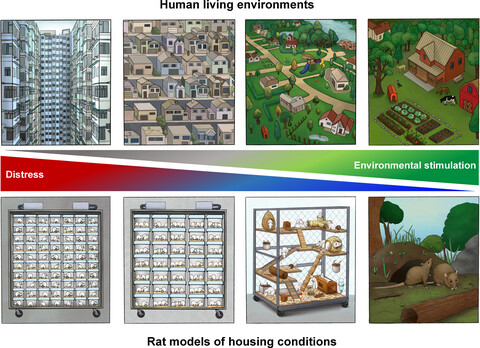
Most stress models have focussed on studying short-term consequences of severe and unusual stressors, which may not correspond with the stressors of our current lifestyle. The standard housing of laboratory rodents already produces basal stress levels difficult to exacerbate if stimuli are not intense enough. We propose turning around the interpretation about the environmental enrichment effects and adapting the laboratory housing conditions to model the human living environment in rats.
Brain circuit dysfunction in specific symptoms of depression
- Pages: 2393-2403
- First Published: 05 April 2021
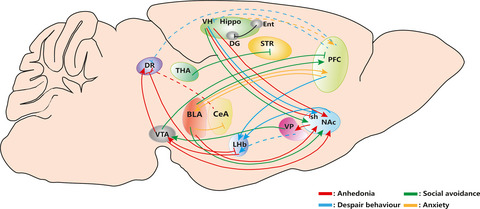
Schematic illustrating neuronal pathways implicated in distinct depression-like behavior and comorbid symptom by various technologies. This review introduces the causal pathological mechanisms between neuronal circuitry and corresponding behavioural alteration, including motivation, despair, social avoidance and comorbid sequelae. Elaborating the depressive behaviours encoded by the discrete circuits may provide a systematic insight in mechanisms of major depressive disorder.
Coordination of social behaviors by the bed nucleus of the stria terminalis
- Pages: 2404-2420
- First Published: 02 October 2020
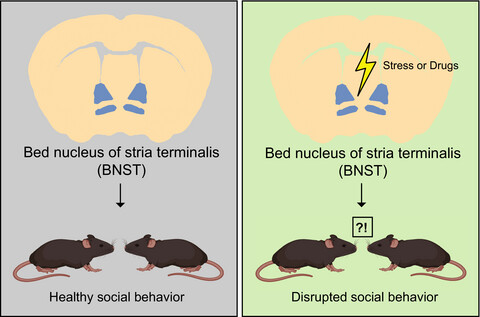
Flanigan and Kash review literature investigating the understudied role of the bed nucleus of the stria terminalis (BNST) in social behavior. Focusing on rodent models, they argue that the BNST plays an important role in the appropriate assessment of social targets and the contexts of social interactions to select relevant behavioral outputs. Disruption of BNST function by stress or drugs of abuse may underlie aspects of social dysfunction in neuropsychiatric disorders.
SPECIAL ISSUE ARTICLES
Nitric Oxide Synthase inhibition counteracts the stress-induced DNA methyltransferase 3b expression in the hippocampus of rats
- Pages: 2421-2434
- First Published: 10 November 2020
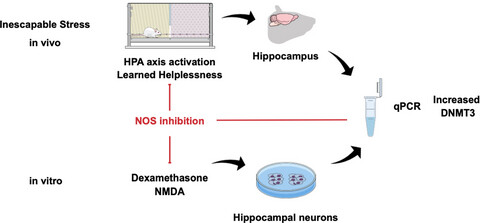
Stress mediators such as excessive activation of NMDA or glucocorticoid receptors increased the DNMT3b mRNA expression in the hippocampus of rats submitted to the learned helplessness paradigm. The antidepressant-like effect of NOS inhibitors was associated with attenuation of the DNMT3b expression. The NOS activity participates in the cellular pathways related to DNA methylation triggered by unpredictable and uncontrollable stress.
Basomedial amygdala activity in mice reflects specific and general aversion uncontrollability
- Pages: 2435-2454
- First Published: 18 December 2020
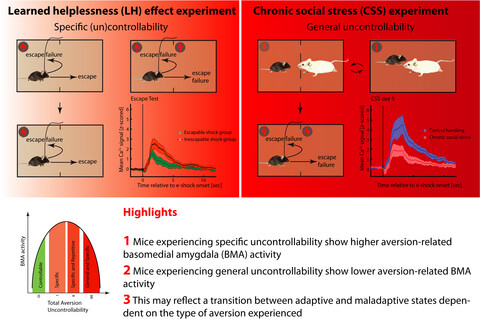
Ineichen et al. use fibre photometry to measure basomedial amygdala activity to e-shock. Mice receiving inescapable e-shock had an escape deficit and higher BMA activity compared to mice receiving escapable e-shock. Mice undergoing chronic uncontrollable social stress made fewer escape attempts but now had lower BMA activity compared to controls. BMA activity appears to provide a neural marker of adaptive and maladaptive states consequent to specific and general uncontrollability, respectively.
SPECIAL ISSUE REVIEW
Intra-amygdala metaplasticity modulation of fear extinction learning
- Pages: 2455-2463
- First Published: 11 December 2020
SPECIAL ISSUE ARTICLES
Separating EEG correlates of stress: Cognitive effort, time pressure, and social-evaluative threat
- Pages: 2464-2473
- First Published: 29 March 2021

The stress response is likely composed of different components such as cognitive effort, time pressure, and social-evaluative threat. This study aimed to distinguish the frontal electroencephalographic (EEG) response to different stress components. A decrease in frontal alpha and increase in beta power were found compared to resting state, while there was no change in EEG power in response to time pressure or when adding social-evaluative threat.
Disarranged neuroplastin environment upon aging and chronic stress recovery in female Sprague Dawley rats
- Pages: 2474-2490
- First Published: 28 April 2021
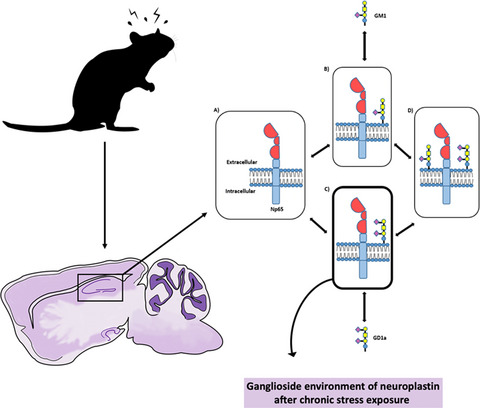
Stress causes memory decline in (pre)menopausal female rats. This effect was followed by expressional changes in the lipid environment of the APP, Np65, AMPA-R, glial cell number and structural changes of membrane lipids in hippocampus. We postulated four possible Np65 environments involving GD1a enrichment and its high dispersion. The specific lipid environment might influence Np65 functionality and could underlie synaptic dysfunction and amyloidogenesis upon aging and stress.
SPECIAL ISSUE REVIEW
An emerging role for microglia in stress-effects on memory
- Pages: 2491-2518
- First Published: 16 March 2021
SPECIAL ISSUE ARTICLES
Threat-of-shock decreases emotional interference on affective stroop performance in healthy controls and anxiety patients
- Pages: 2519-2528
- First Published: 18 November 2019
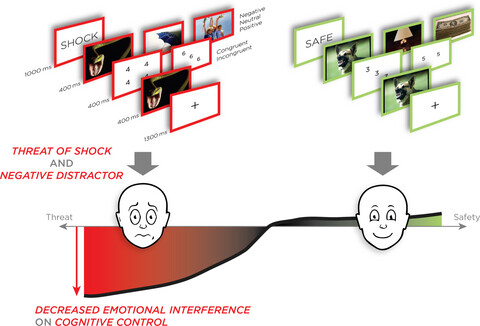
In both anxiety patients and healthy controls, threat-of-shock and negative, but not positive or neutral, distractors improve performance on a modified Affective Stroop Task. Findings support a narrowing of attention whereby a certain level of anxiety can decrease task-irrelevant processing and improve cognitive control.
Anxious arousal alters prefrontal cortical control of stopping
- Pages: 2529-2541
- First Published: 18 September 2020
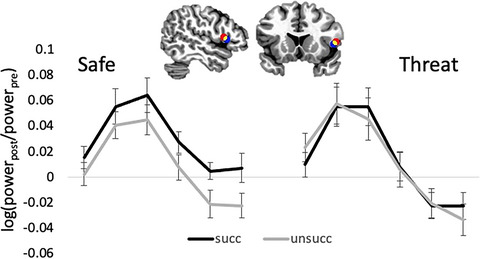
Using magnetoencephalography to investigate the relationship between induced anxiety and stopping during a stop-signal task, increased prefrontal beta-band activity was related to successful stopping, with beta in right inferior frontal gyrus correlated with stopping efficiency. Anxiety slowed stop-signal reaction times and weakened prefrontal beta (which no longer correlated with SSRT), suggesting altered right IFG functioning might explain impaired inhibitory control during anxious arousal.
Examining the effect of stress on the flexible updating of avoidance responses
- Pages: 2542-2557
- First Published: 22 February 2021
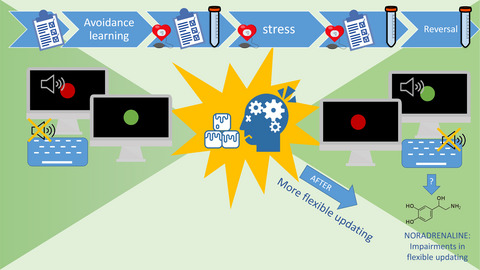
Acute stress did not lead to more habitual avoidance responding. On the contrary, better stimulus–response awareness in a Reversal Test when under stress was observed. Furthermore, findings suggested that impairments in the flexible updating of avoidance responses are related to increased noradrenergic activity in stressed participants.
Subjective stress and proactive and reactive cognitive control strategies
- Pages: 2558-2570
- First Published: 30 March 2021
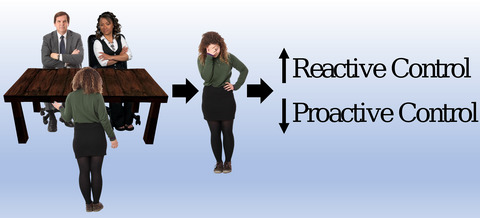
The goal of this research was to investigate the effects of acute stress on proactive and reactive cognitive control strategies. Participants completed the Trier Social Stress Test or control tasks. Use of proactive and reactive cognitive control strategies was measured with the AX-Continuous Performance Test. Results suggest that higher subjective stress responses are associated with less frequent proactive and more frequent reactive cognitive control strategies.
Threat of shock promotes passive avoidance, but not active avoidance
- Pages: 2571-2580
- First Published: 13 March 2021
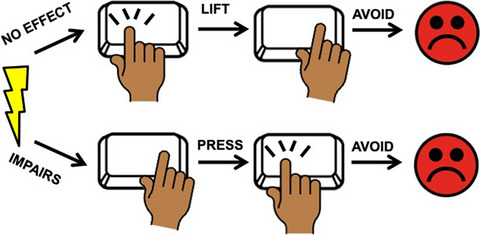
In this study, we provide the first direct within-study comparison of the effects of threat of shock on active and passive avoidance. We operationalize passive avoidance as withholding a button press response in the face of negative outcomes, and active avoidance as lifting/releasing a button press in the face of negative outcomes. Participants were less accurate when pressing to avoid losing under threat of shock (than when they were required to press to win). By contrast, there was no valence effect on lift trials under threat of shock. We interpret this as threat of shock promoting passive avoidance (i.e., no go to avoid losing), but having no effect on active avoidance (i.e., lift to avoid losing).
The effects of psychological stress on approach tendencies for smoking-related cues in smokers
- Pages: 2581-2591
- First Published: 08 May 2021
Auditory deviance detection and involuntary attention allocation in occupational burnout—A follow-up study
- Pages: 2592-2611
- First Published: 20 August 2021
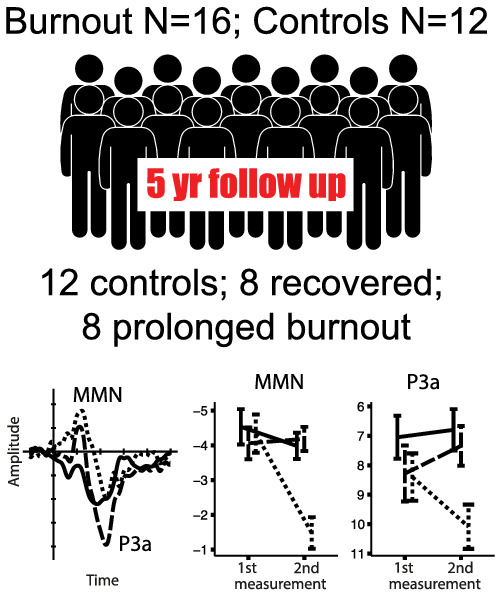
In this longitudinal study, we investigated the changes in central auditory processing and involuntary allocation of attention in occupational burnout. After 5 years of follow-up, half of the burnout group had recovered, and half still had burnout. Moreover, the prolongation of burnout, as opposed to recovery, was associated with alterations in attention allocation.
The effects of psychosocial stress on item, cued-pair and emotional memory
- Pages: 2612-2631
- First Published: 22 May 2021
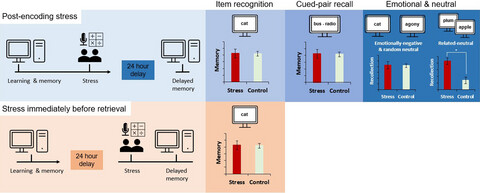
This series of four experiments explores the impact of psychosocial stress on episodic memory. There were only very weak effects of post encoding stress or stress immediately before retrieval on recognition accuracy or familiarity. Our data suggest that high levels of post encoding stress may, however, influence recollection, particularly for semantically related material.
Slow oscillation-spindle coupling is negatively associated with emotional memory formation following stress
- Pages: 2632-2650
- First Published: 29 January 2021
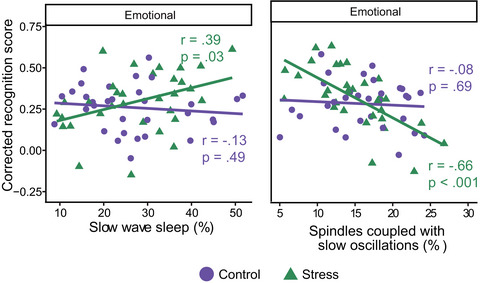
When emotional memories are formed under stress, the effects of slow wave sleep on retention of those memories differs depending on the sleep measure. Although time spent in slow wave sleep was positively associated with emotional memory following stress, the coupling of sleep spindles and slow oscillations during slow wave sleep was negatively associated with emotional memory following stress. These results suggest that stress around the time of initial memory formation impacts the relationship between slow wave sleep and memory.
Behavioral tagging as a mechanism for aversive-memory formation under acute stress
- Pages: 2651-2665
- First Published: 29 April 2021
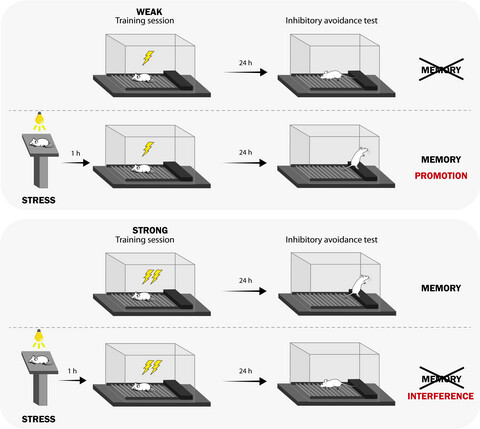
The same acute stressor acting in a specific time window promotes long-term memory (LTM) if the inhibitory-avoidance training (IA) is weak but impairs it when training is strong. Both, IA-LTM promotion and the rescue of IA-LTM impairment depend on hippocampal protein synthesis in a way that is compatible with the Behavioral Tagging hypothesis. Under this perspective, stress could lead to phenomena of promotion or interference on IA-LTM depending on proteins availability and learning strength.
Hippocampal glucocorticoid target genes associated with enhancement of memory consolidation
- Pages: 2666-2683
- First Published: 11 April 2021
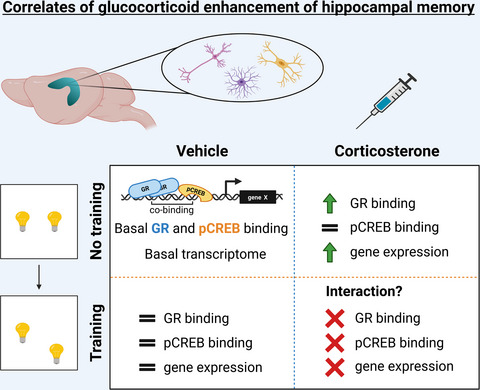
Administration of corticosterone after object location training enhanced long-term hippocampal memory. Glucocorticoid receptor and phosphorylated cAMP response element-binding protein were co-bound at the hippocampal genome and exclusively GR DNA-binding levels were altered after corticosterone, yet binding of these two transcription factors was not affected by training nor was any interaction detected. Corticosterone altered the transcriptome in a context-independent manner—partially via direct GR-regulation—and reflects involvement of both neuronal and non-neuronal cells in the male rat hippocampus.
Cortisol promotes the cognitive regulation of high intensive emotions independent of timing
- Pages: 2684-2698
- First Published: 11 March 2021
Stress-induced cortisol modulates the control of memory retrieval towards the dorsal striatum
- Pages: 2699-2713
- First Published: 17 August 2020
Individual differences in the encoding of contextual details following acute stress: An explorative study
- Pages: 2714-2738
- First Published: 28 November 2020
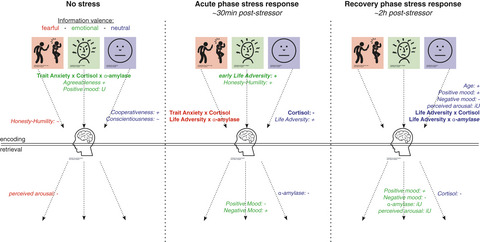
Theory- and data-driven perspectives were used to explore individual characteristics that contribute to memory contextualization of different valenced information during the acute and recovery phase of the stress response. Life adversity and trait anxiety modulate the stress-response, thereby impacting memory contextualization following acute stress. Other findings sparked new hypothesis about non-anxious personality traits, age, mood and states during retrieval.
Individual differences in threat and reward neural circuitry activation: Testing dimensional models of early adversity, anxiety and depression
- Pages: 2739-2753
- First Published: 05 January 2022
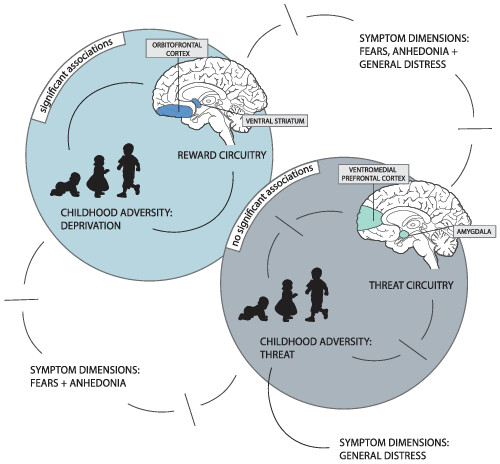
A dimensional approach was used to reconsider relationships between childhood adversity, adolescent threat and reward brain functioning, and symptoms of anxiety and depression. Significant associations were found between more severe childhood deprivation adversity and greater activation of reward neural circuitry, but no significant effects associated childhood threat adversity with symptom dimensions of anxiety and depression, or threat neurocircuitry. Results partially support prior theories and highlight the importance of testing dimensional models in large samples to robustly examine theoretically implicated biological processes.
Sexual dimorphic effects of restraint stress on prefrontal cortical function are mediated by glucocorticoid receptor activation
- Pages: 2754-2765
- First Published: 24 March 2021
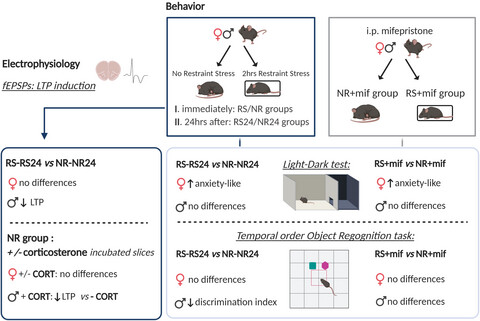
Our study revealed that only male mice exhibited reduced recency memory and decreased long-term potentiation immediately and 24 hr following acute restraint stress. Incubation of acute brain slices with corticosterone mimicked the reduced long-term potentiation in male mice only. Mifepristone administration reversed the reduced recency memory in male mice.
Methyl-CpG binding protein 2 dysfunction provides stress vulnerability with sex- and zygosity-dependent outcomes
- Pages: 2766-2776
- First Published: 02 March 2021

Zygosity for a truncating mutation at the X-linked MeCP2 gene and sex differentially contribute to the onset of stress vulnerability in transgenic mice. Zygosity is crucial in rising contextual fear and hypotalamic HPA axis-regulatory genes expression (Crh and Avp) compared to wt, while sex primarily modulates the detrimental consequences of MeCP2 hypofunctionality on HPA axis reactivity. Sex and zygosity together influence cortical expression of the HPA axis negative feedback regulator Fkbp5.
Differential chronic social stress models in male and female mice
- Pages: 2777-2793
- First Published: 29 September 2021
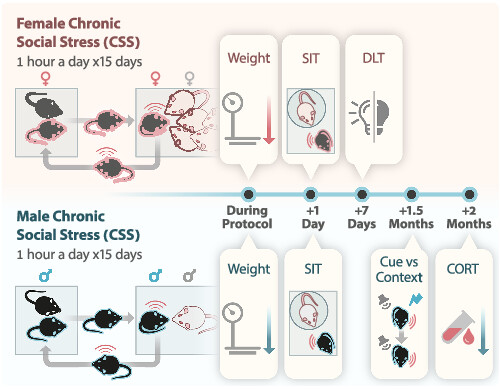
Furman and colleagues describe a novel female mouse model of chronic social stress (CSS) with a parallel male mouse model. These models reveal short- and long-term effects, demonstrating sex-related differential effects. Females present more prolonged body weight reduction during CSS and hyperactive anxious behaviour following CSS. Although both sexes manifest reduced social interactions, only stressed males exhibit long-term changes in emotional memories and neuroendocrine functions.
Influence of cortisol awakening response on telomere length: Trends for males and females
- Pages: 2794-2803
- First Published: 04 October 2020

Prediction plot depicting the mathematical relationship between telomere length (log) and cortisol awakening response (CAR) as area under the curve (Area), trended for sex (male, female). Results suggest the relationship is not linear and can be represented as a complex arcsin or inverse sine function and these patterns are observed to be opposing in males and females.
The relationship between resilience and neurophysiological stress in Special Operations Forces combat service members
- Pages: 2804-2812
- First Published: 11 January 2021
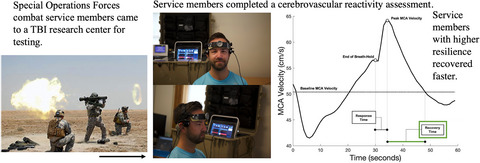
Military resilience research is increasing due to the growing literature on the association of resilience with stress adaptation. This study aimed to investigate which neurophysiological stress adaptation components resilience related to in Special Operations Forces (SOF) combat service members. More resilient SOF combat service members recovered faster from physiological stress than less resilient counterparts.
SPECIAL ISSUE REVIEW
Forced swim stressor: Trends in usage and mechanistic consideration
- Pages: 2813-2831
- First Published: 06 February 2021
COMMENTARY
The forced swim test: Giving up on behavioral despair (Commentary on Molendijk & de Kloet, 2021)
- Pages: 2832-2835
- First Published: 06 May 2021
SPECIAL ISSUE ARTICLE
Heart–brain interactions during social and cognitive stress in hypertensive disease: A multidimensional approach
- Pages: 2836-2850
- First Published: 23 September 2020
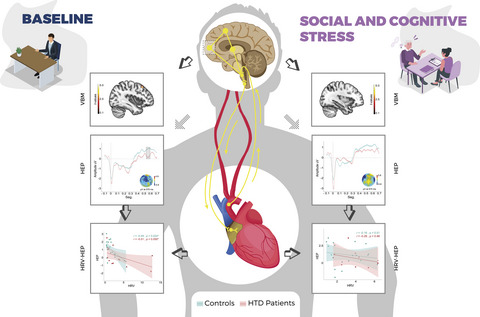
Hypertensive disease patients gave signs of stress-related autonomic imbalance, reflected in a potential basal stress overload effect and a lack of responsiveness to acute psychosocial stress, accompanied by neurophysiological and neuroanatomical alterations. These multimodal findings encourage the development of applied innovations in the characterization, prognosis and treatment of hypertension, and offer new insights into the heart–brain interactions.
SPECIAL ISSUE REVIEWS
Inflammation-driven brain and gut barrier dysfunction in stress and mood disorders
- Pages: 2851-2894
- First Published: 20 April 2021
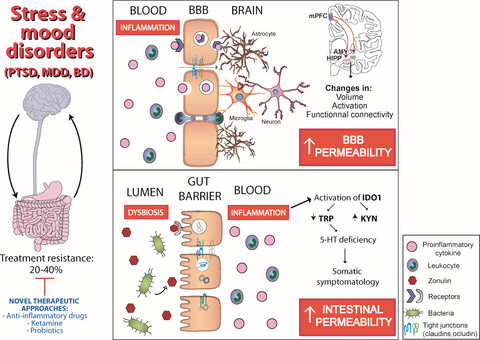
Inflammation-driven brain and gut barrier dysfunction in stress and mood disorders. Mood disorders, such as post-traumatic stress disorder (PTSD), major depressive disorder (MDD), and bipolar disorder (BD), are associated with high rates of treatment resistance and relapse. Increasing evidence links blood–brain barrier (BBB) and gut barrier leakiness to negative emotional symptoms reported in mood disorders, possibly through stress-induced inflammation, although specific biological mechanisms remain to be elucidated. Novel therapeutic approaches targeting BBB and gut barrier permeability could contribute to bridging the gap in treatment response.
Integrating the monoamine and cytokine hypotheses of depression: Is histamine the missing link?
- Pages: 2895-2911
- First Published: 15 July 2021
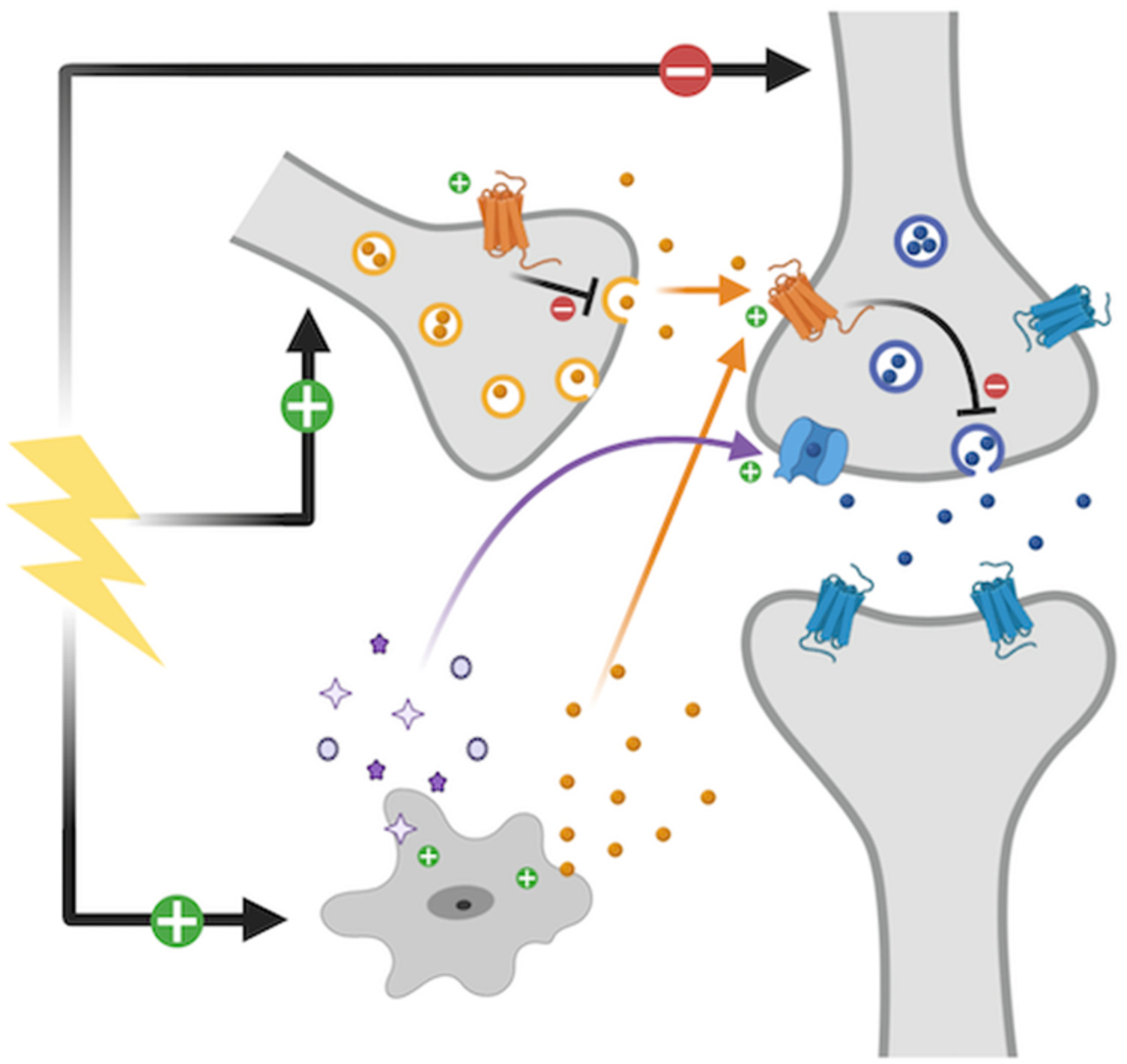
The underlying neuropathology of depressive illness remains to be elucidated. Several hypotheses have been proposed as molecular underpinnings for major depressive disorder, including the monoamine and the cytokine hypotheses. The goal of the current review is to integrate histamine into these two well-studied hypotheses to provide an updated perspective of depressive illness research and thereby identify new potential targets for the treatment of major depressive disorder.
SPECIAL ISSUE ARTICLES
Mast cell activation ameliorates pentylenetetrazole-induced seizures in rats: The potential role for serotonin
- Pages: 2912-2924
- First Published: 10 February 2021
Behavioural Neuroscience
C-low threshold mechanoafferent targeted dynamic touch modulates stress resilience in rats exposed to chronic mild stress
- Pages: 2925-2938
- First Published: 27 August 2020
Casein kinase 1 epsilon and circadian misalignment impact affective behaviours in mice
- Pages: 2939-2954
- First Published: 12 September 2021
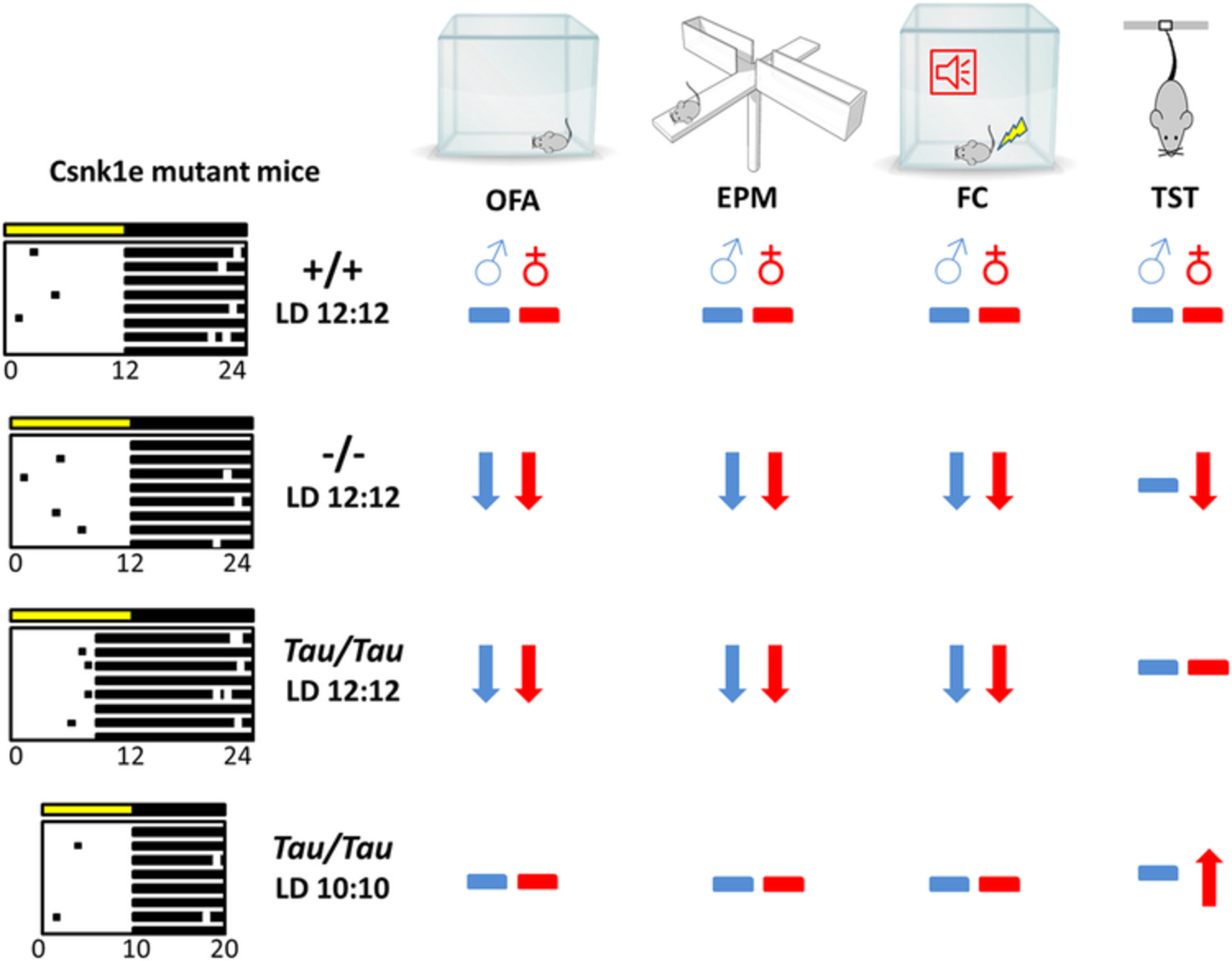
Anxiety-like, fear, and despair behaviours were examined in both male and female mice of Csnk1e wild type, null, and tau mutants. Compared with wild-type mice, lower levels of fear and anxiety-like behaviours were observed in both mutant lines and in both sexes. However, the behavioural despair had distinct phenotypic patterns, with markedly less behavioural despair in female null mutants, but not in tau mutants of either sex. To determine whether abnormal light entrainment of tau mutants to 24-h light–dark cycles contributes to these phenotypic differences, these behaviours were also examined in tau mutants on a 20-h light–dark cycle close to their endogenous circadian period. The normalized entrainment restored more wild-type-like behaviours for fear and anxiety, but it induced behavioural despair in tau mutant females.
Effects of pro-depressant and immunomodulatory drugs on biases in decision-making in the rat judgement bias task
- Pages: 2955-2970
- First Published: 27 January 2021
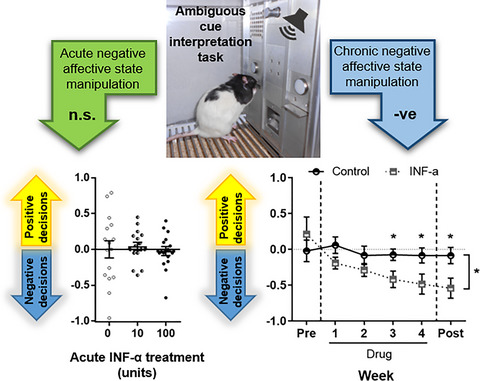
Decision-making bias in rats, measured using a judgement bias task, is not altered by acute treatments with pro-depressant or immunomodulatory drugs, but becomes more negative following chronic treatment. The time course of change in decision-making bias reflects the subjective reporting of changes in depression symptoms in humans treated with these drugs.
Lifelong chronic psychosocial stress induces a proteomic signature of Alzheimer's disease in wildtype mice
- Pages: 2971-2985
- First Published: 28 May 2021





